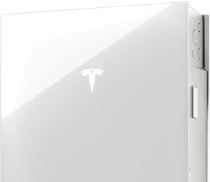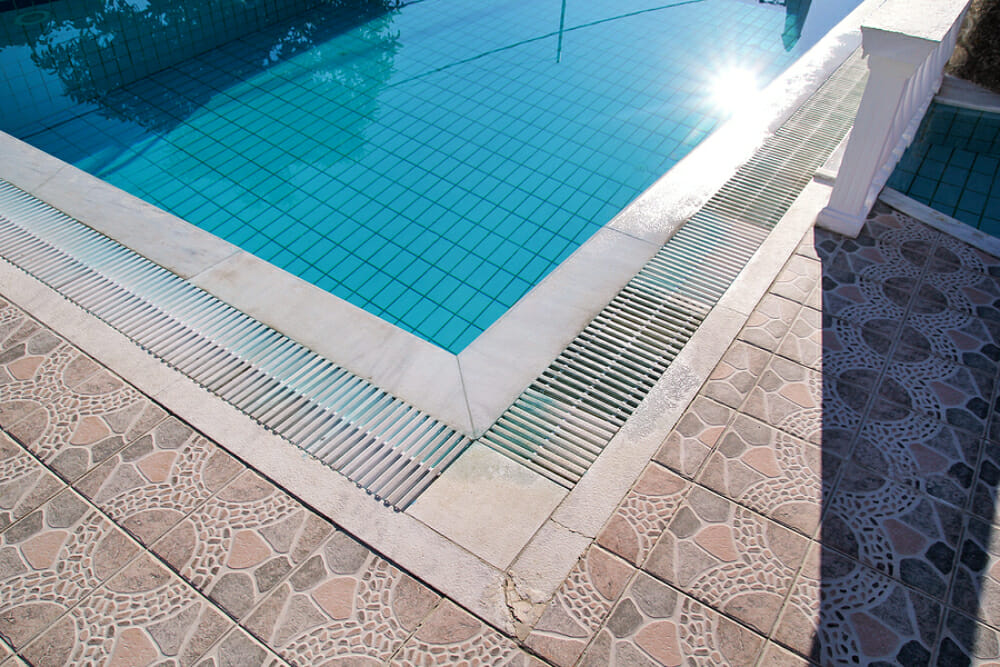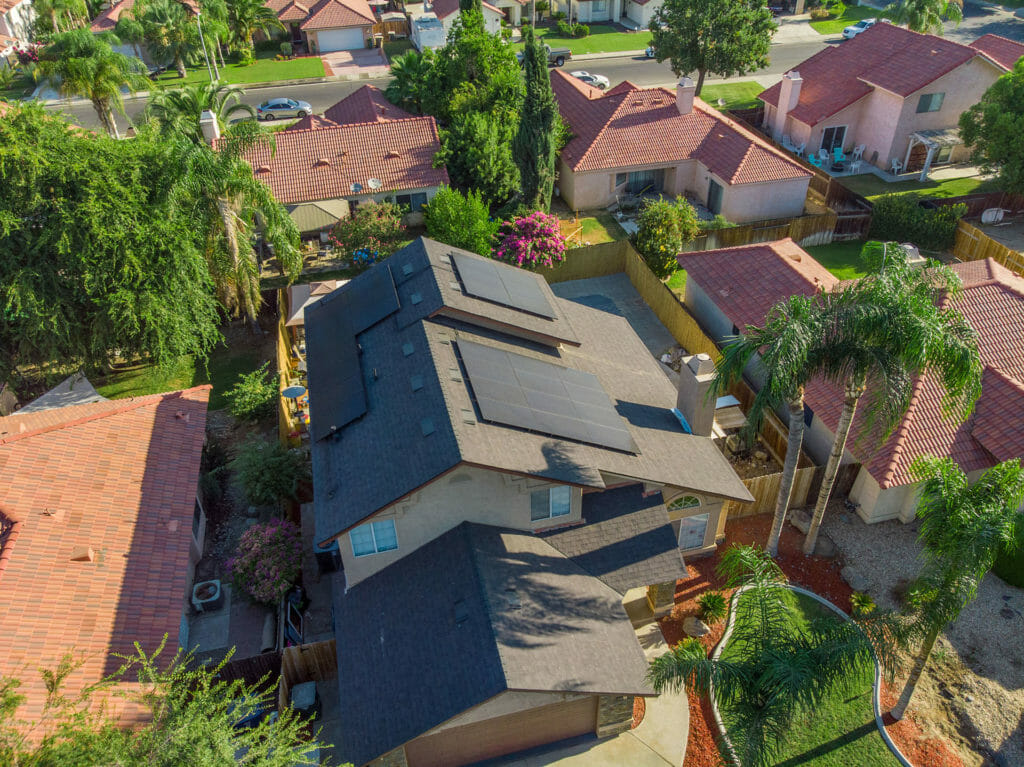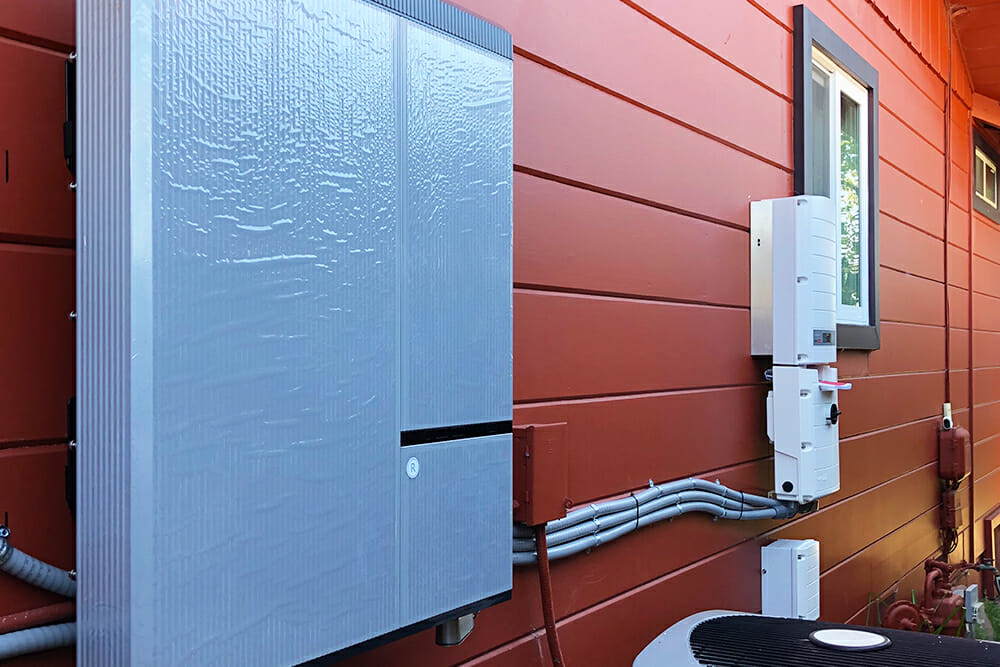A net zero home is self sufficient, sourcing as much energy from renewable resources, such as solar energy, as it consumes. Net zero homes can significantly reduce energy bills, and are better for the environment.
Nowadays, renewable energy is much cheaper than energy sourced from the grid. This price disparity is only widening as utility providers hike rates across the country. Growing industries like clean technology push the limits of energy efficiency as demand increases. And as states across the country commit to curbing carbon emissions, environmental sustainability is now the focus of government policy and stricter regulations.
Achieving net zero for your home is an ambitious goal, but one that is becoming more attainable. However, it takes some careful planning, financial commitment, and an understanding of how energy efficiency can be increased.
The Home Energy Rating System Index, or HERS Index, is the place to start when it comes to net zero building.
The HERS Index is an energy efficiency rating system, rating houses on a 0 to 150 scale—0 is the most energy efficient, 150 is the least energy efficient. To put that into perspective, the average newly constructed home has a rating of 100. Older homes tend to be less efficient, rating closer to 150.
The HERS Index is the industry standard energy efficiency measure. It is a great resource for those looking to reduce energy use. You can request a certified HERS rating inspection to get your home’s rating and start figuring out ways to conserve. The rating is especially useful if you’re in the market to buy a home. You can quickly compare energy performance and costs to make a more informed buying decision.
Going net zero means you’ll have to figure out what type of upgrades are needed. Unfortunately, the older your home, the more changes you’ll probably have to make, and that can take both time and considerable money. Those that own newer homes—built in the last decade—can likely achieve net zero more quickly and affordably.
Here are some steps you can take to get your home close to 0.
Solar is an important part of any energy efficient home.
Solar reduces monthly energy costs and carbon emissions, both of which get you closer to net zero efficiency. The first step is sizing your solar system—if it’s too small, your energy demand will outpace solar energy production. Learn how to size your solar system in our blog post.
Of course, once you have solar, energy production and energy demand will probably be at the forefront of your mind. Old appliances draw a lot of energy. Think about upgrading to energy efficient laundry machines and kitchen appliances. Things like smart thermostats can cut energy usage as much as 15%. When it comes to energy efficiency, incremental improvements can make a big difference.
Unfortunately, solar panels alone won’t offset all your energy needs. You can equip your system with a solar battery system to store excess energy for use when needed, like at night after the sun has gone down and your panels no longer make energy. Solar battery storage is limited in capacity and will only provide enough energy to run essential appliances, meaning you’ll probably need to draw energy from the grid. Offset this energy usage by upgrading home systems and components and you can still attain net zero efficiency.
Net zero homes make use of energy efficient building materials.
Net zero experts suggest starting your energy upgrades on the outside of your home, or where comfort and sustainability begin. This process is called “sealing the envelope.” A home’s envelope is anything you can draw a line around: the roof, the walls, and the floor. All parts of the building envelope exchange air, water, and heat. Sealing these exchange points is one of the best ways to lower your energy efficiency rating.
An inefficient single-pane window allows hot air and cold air to enter and exit the home, affecting temperature. Windows are responsible for up to 30% of residential heating and cooling energy use—you’ll have to use the air conditioner or heater more often to balance temperature. On the other hand, double- and triple-pane windows are much more energy efficient and better maintain comfortable temperatures.
Achieving net zero energy means you construct or upgrade your home with sustainability in mind. Here are some other components you should consider upgrading:
Roofs: Roofing materials vary in energy efficiency. Many consider metal roofing the most energy efficient. It reflects rather than traps heat, a sustainable choice in warmer regions. Metal sheets are also perfect for attaching solar panels, which often clip right on. No matter what roofing material you go with, improper flashing, weatherization, and ventilation can seriously hinder your net zero goals. Proper installation and insulation is key.
Walls: Unlike roofs, walls receive little direct sunlight. And because they are vertical, they shed water quickly. Your goal should be to fortify walls against wind and rain. Old or poorly sealed exterior-facing doors, windows, and walls can allow water and air to seep inside. Again, proper insulation is important.
There are two ways you can make better insulate your walls: 1) use rigid insulation, a type of insulating foam board notable for its energy efficiency and/or 2) take a double-wall approach whereby an exterior wall and interior wall are erected up to 12 inches apart.
Foundation: A home’s foundation endures only small temperature swings because it is usually buried underground, protected from the elements. But unless you live in a particularly arid region, the ground is always wet, and that water can find its way inside. Water in the soil can even make it all the way to the roof! Damp-proofer, watertight sealer, and rigid insulation block water from entering.
Take advantage of the natural resources, such as trees, that surround your home. Green landscaping can save enough energy to pay for itself after just a few years.
You might think of landscaping in terms of curb appeal—but it can help you conserve energy, too!
Trees provide shade, which can cut down on how often you power up the air conditioner. Trees that drop their leaves during fall are twice as nice—they shade during hot months and let the sunshine through during cold months. Trees also affect the wind flow around your home, slowing it down or aiding its speed. Known as a windbreak, trees planted in one or more rows can slow the speed of wind so it stays warmer around your house. And if you intend to plant a garden, windbreaks prevent soil erosion and promote healthier plant growth.
Green landscaping also reduces water use. Keeping a grass lawn in good shape requires a lot of water, and while you can hope to get that water from rain or snow during the winter, during summer months, water demand skyrockets.
Efficient landscaping options reduce water use, and also battle soil erosion and water runoff. Here are some green, sustainable landscaping tips:
- Compost to increase soil fertility
- Incorporate stone walls and other non-plant elements
- Install recycled turf
- Plant less water-intensive plants
Keep in mind that some green landscaping elements—like windbreaks—might take some time to implement.
A heat recovery system is more efficient than a standard HVAC system.
Once your home is sealed, you need to find an efficient way to move warm or cold air throughout the home. Heat recovery is a method which is used to reduce heating, cooling, and energy demands.
Fresh air is typically provided by opening windows or by a mechanical ventilation system that blows air throughout the home. During cold weather, air has to be heated. At the same time that the cold incoming air is heated by the mechanic system, the warm air already inside the building gets expelled through an exhaust vent.
A heat recovery system is a method of transferring energy, or heat, from waste air (the air already inside your home) to the cold incoming air. This process does not compromise air quality. The heat recovery system delivers warm air through a thermal wheel, which contains small metal airways that absorb heat from the warm outgoing air. As the wheel spins, it transfers heat from the waste air to the cold incoming air—this process saves energy while still supplying your home with warm, fresh air.
Achieving net zero efficiency is an ambitious goal. It’s one that will require time, money, and careful planning. However, the benefits of net zero are clear: reducing energy usage saves money and has a positive impact on the environment. Even if your home does not achieve a 0 rating on the HERS Index, small energy efficient upgrades can reduce energy costs and help the environment.





